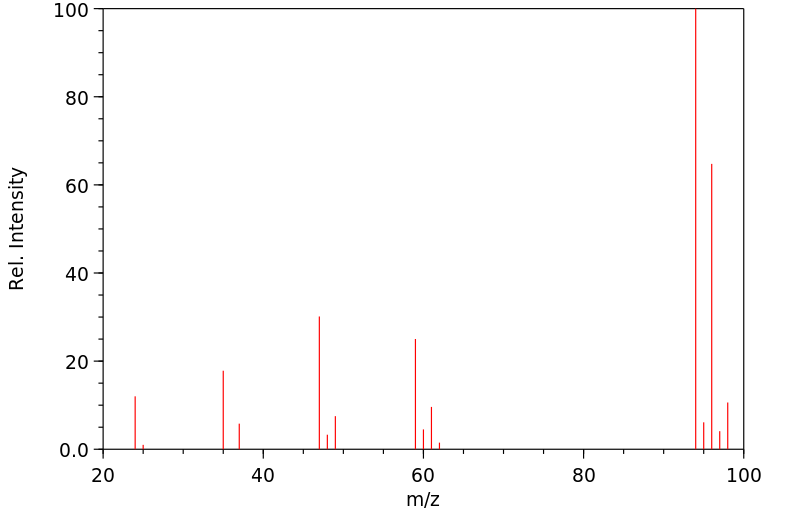代谢
在大鼠吸入二氯乙炔后,已经显示了谷胱甘肽结合。...S-(1,2-二氯乙烯)谷胱甘肽(DCVG)被识别为谷胱甘肽(GSH)依赖性代谢的产物/二氯乙炔/(DCA)在体外和...N-乙酰-S-(1,2-二氯乙烯)-L-半胱氨酸(N-Ac-DCVC)被识别为大鼠DCA的尿液代谢物。通过H-NMR光谱(400 MHz)、质谱和紫外光谱明确识别了产物DCVG。经过酯化后,通过GC/MS识别N-Ac-DCVC为大鼠的尿液代谢物。将雄性大鼠暴露于36±5 ppm DCA(将100 mmol的DCA引入暴露系统)1小时后,收集的尿液(收集24小时)中含有10.7 mmol的N-Ac-DCVC,通过HPLC分析确定。DCVG的形成、肾脏处理成S-(1,2-二氯乙烯)-L-半胱氨酸,以及肾脏中胱氨酸S-结合酶裂解这种半胱氨酸S-结合物,并形成反应性和致突变中间体,可能解释了DCA的肾毒性和肾致癌性。N-Ac-CDVC是DCVG通过巯基尿酸形成酶处理的最终产物。
Glutathione conjugation has been shown in rats following inhalation of dichloroacetylene. ...S-(1,2-dichlorovinyl)glutathione (DCVG) /was identified/ as a product of the glutathione (GSH)-dependent metabolism of /dichloroacetylene/ (DCA) in vitro and ...N-acetyl-S-(1,2-dichlorovinyl)-L-cysteine (N-Ac-DCVC) /was identified/ as a urinary metabolite of DCA in rats. The product, DCVG, was definitively identified by H-NMR spectrometry (400 MHz), mass spectrometry and UV spectroscopy. N-Ac-DCVC was identified as a urinary metabolite from rats by GC/MS after esterification. Urine (collected for 24 hr) from male rats exposed to 36 n 5 ppm DCA (100 mmol of DCA introduced into the exposure system) for 1 hr contained 10.7 mmol of N-Ac-DCVC as determined by HPLC analysis. Formation of DCVG, renal processing to S-(1,2-dichlorovinyl)-L-cysteine, and cleavage of this cysteine S-conjugate by cysteine S-conjugate beta-lyase in the kidney and the formation of reactive and mutagenic intermediates may account for DCA nephrotoxicity and nephrocarcinogenicity. N-Ac-CDVC is the end product of DCVG processing by the enzymes of mercapturic acid formation.
来源:Hazardous Substances Data Bank (HSDB)







